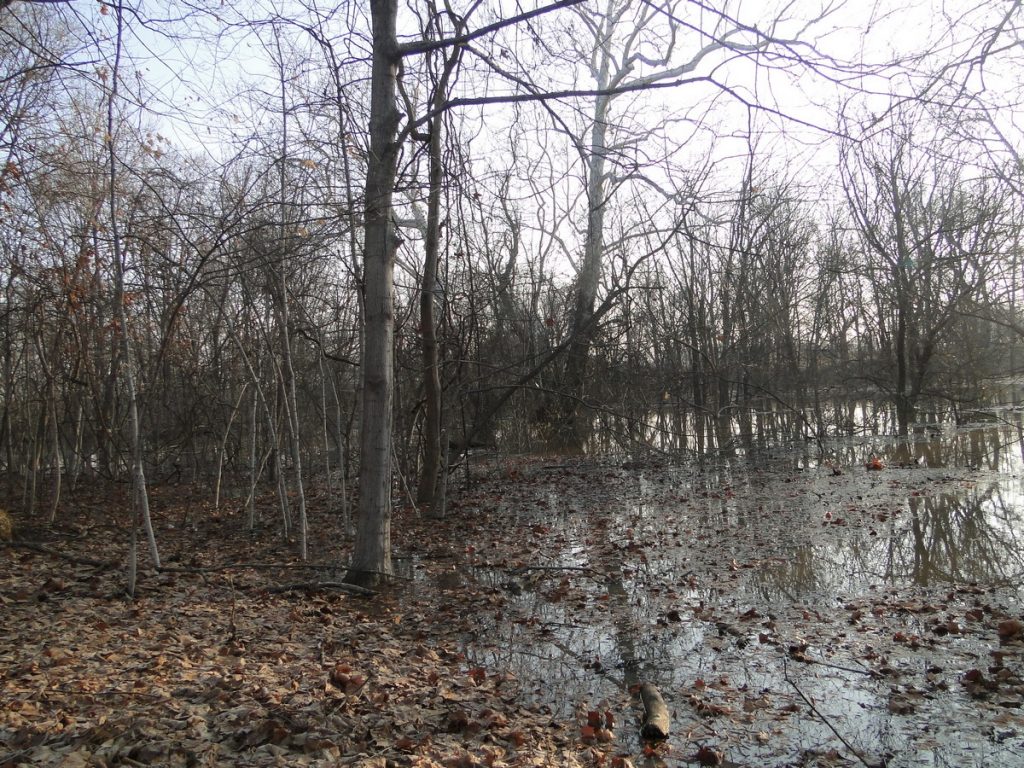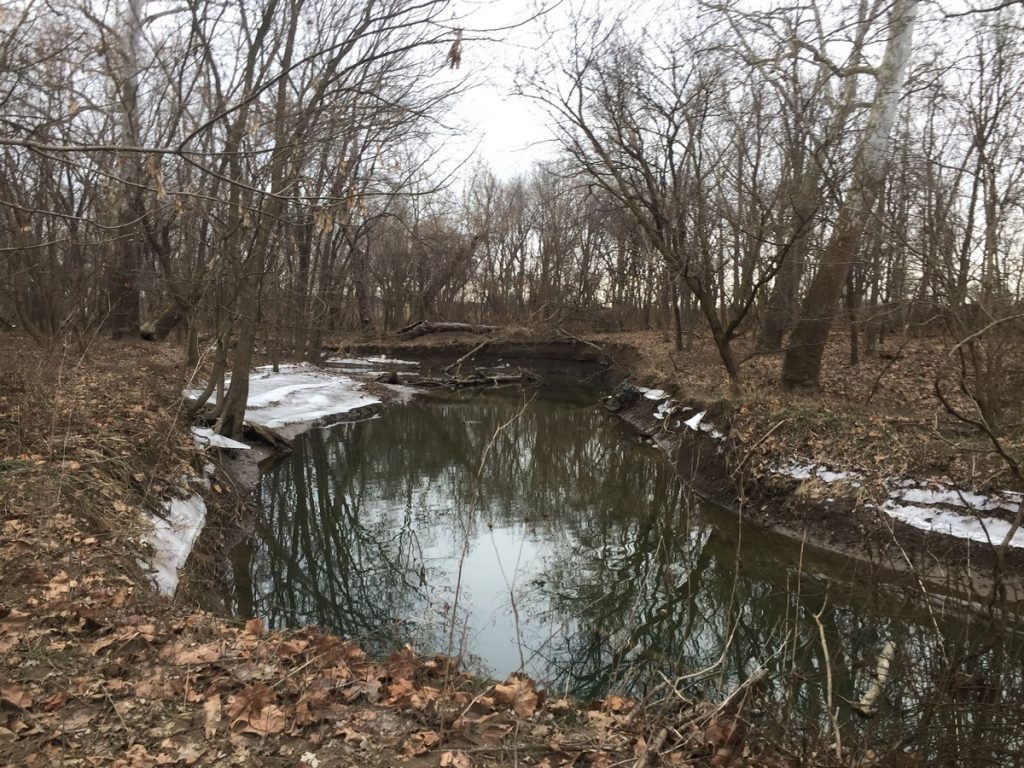You are now standing at the threshold of a floodplain forest through which Carmel Creek flows just before its confluence with the White River. Simply put, a floodplain forest is a low-lying forest community that is subject to the flood events of nearby streams or rivers. During flood events a backwards flow can occur at the confluence, causing slowly rising water to fill this area like a bathtub. At this spot, water would be about ten feet deep during peak floods.
Floodplain forests are critically important, as they store floodwaters, keeping them out of people’s homes downstream. Also, they improve water quality: When the floodwaters recede, the trees and other vegetation slow the water’s flow, allowing sediment to trickle down and make deposits on the forest floor. This keeps that sediment out of the river, helping clean it naturally.
Stop at the Chronolog station along Carmel Creek to participate in a citizen science project! You can help monitor creek conditions by contributing your photo to a timelapse of the waterway. More information on this project can be found here.
CONFLUENCE the joining of two or more rivers to combine a single channel


